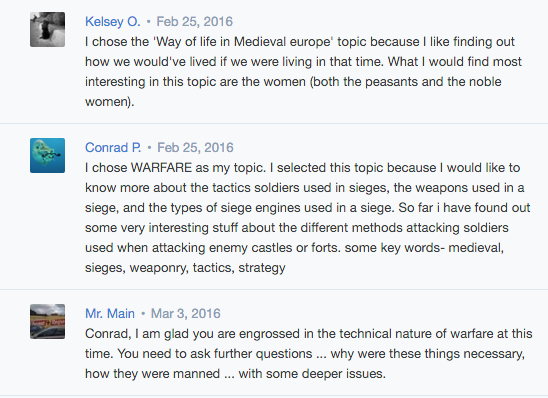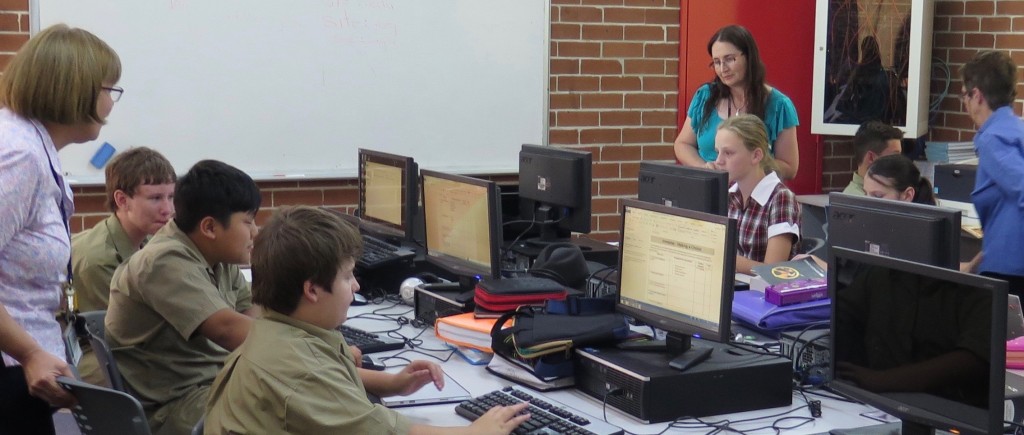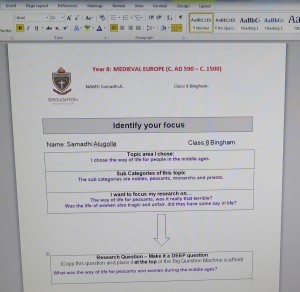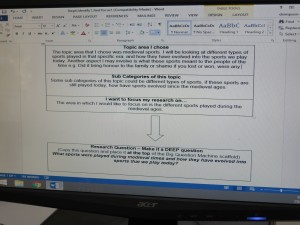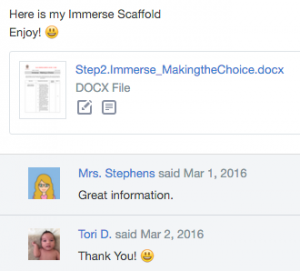(Alinda: Part 2 – Continuing the ‘adventures’ of our Year 8 Medieval Europe GI classes)
Step 4 Identify – the “Big Dip” or not!
By the time students have read, watched videos and taken notes within their topic area for a number of lessons (actually for three weeks of lessons of Immerse and then Explore) they really know the aspect of a specific area that fascinates them. Some have also discussed their topic interests in their Edmodo group.
They are sometimes totally overwhelmed by where they want to go with all of this information. This aspect of ‘being overwhelmed’ is familiar to most people working through a sizeable task and the students like to know that we are aware of how they feel. This is when they should complete the second survey for data collection.
A time of reflection with their peers and in particular with students who are working in a similar topic area helps them to feel supported and directs them. Actually in this group of students, although some admit to feeling this way, most seem to have found direction ‘calmly’ and this may be that they have been through this whole process only four months ago at the end of last year when they studied Ancient China so thought through issues as they read and knew what to expect.
Now is the time to gather a team of teachers to assist!
At Broughton we have quite a number of teachers experienced in using Guided Inquiry and some are willing to assist in the couple of lessons where extra help is needed. We always ‘book’ our special needs teachers to assist the students they know will need help and Chris Main (Head of Humanities) comes to the other classes (besides his own) when the timetable allows.
The student’s specific area of interest can now be quite narrow but after considering how this fits within the whole topic area, it is possible to create a question that is rich and deep.
After many years of teaching experience, Chris Main, embraces Inquiry Learning and Guided Inquiry in particular and says that a good teacher has always used elements of this. Except for teaching a few aspects of information literacy, I rarely have to do anything in his classroom except to assist students to focus and find what they need in the way of resources.
I took a video of Chris introducing the two scaffolds that make up the support method we use to introduce students to writing their inquiry question. I then linked this video via an Edmodo post to the other three Year 8 classes so they could have the benefit of his instruction. Students can now revise this aspect if they need to.
It is interesting how well many of the students grasp the idea of writing a deep question and how they work through the table to do this. Of course some of these students are working on their third or even fourth Guided Inquiry experience if they have been at this school since Primary school.
Because the students in this instance are working in an Edmodo group, the teacher is able to give support throughout whenever they make a comment and also to give feedback on all their scaffolds as they are ‘marked’.
Once a research question has been checked for depth, students are issued the ‘Create’ task which in this case is to write a two to three-page report that answers their question and then they begin ‘Step 5. Gather’.
At the end of each lesson Chris Main usually has a short, interesting activity or ‘story’. One day he had prepared a five minute introduction to Chaucer – introducing the writing of Medieval times. Again this video was shared with the other three classes via their Edmodo group.
My teaching plan for this week: Many students are still identifying their focus and research question but others are beginning the next step so instruction on that will be given.
Step 5. Gather
Students will be reminded of planning techniques for writing a report. This helps students in many subject areas when an essay is required.
These same students all “endured” my lesson on “ The Hamburger” report in November last year so I won’t go into all the ‘relish and fried onion layer’ details when I tell the ‘story’ this year!
The planning scaffold is available to them and they should know exactly what to do this year!
From now on the teachers’ (Class and TL) task will probably be a matter of observing and assisting with skills of referencing and finding pertinent material to back up ideas.
Coming up later… Create and Share
